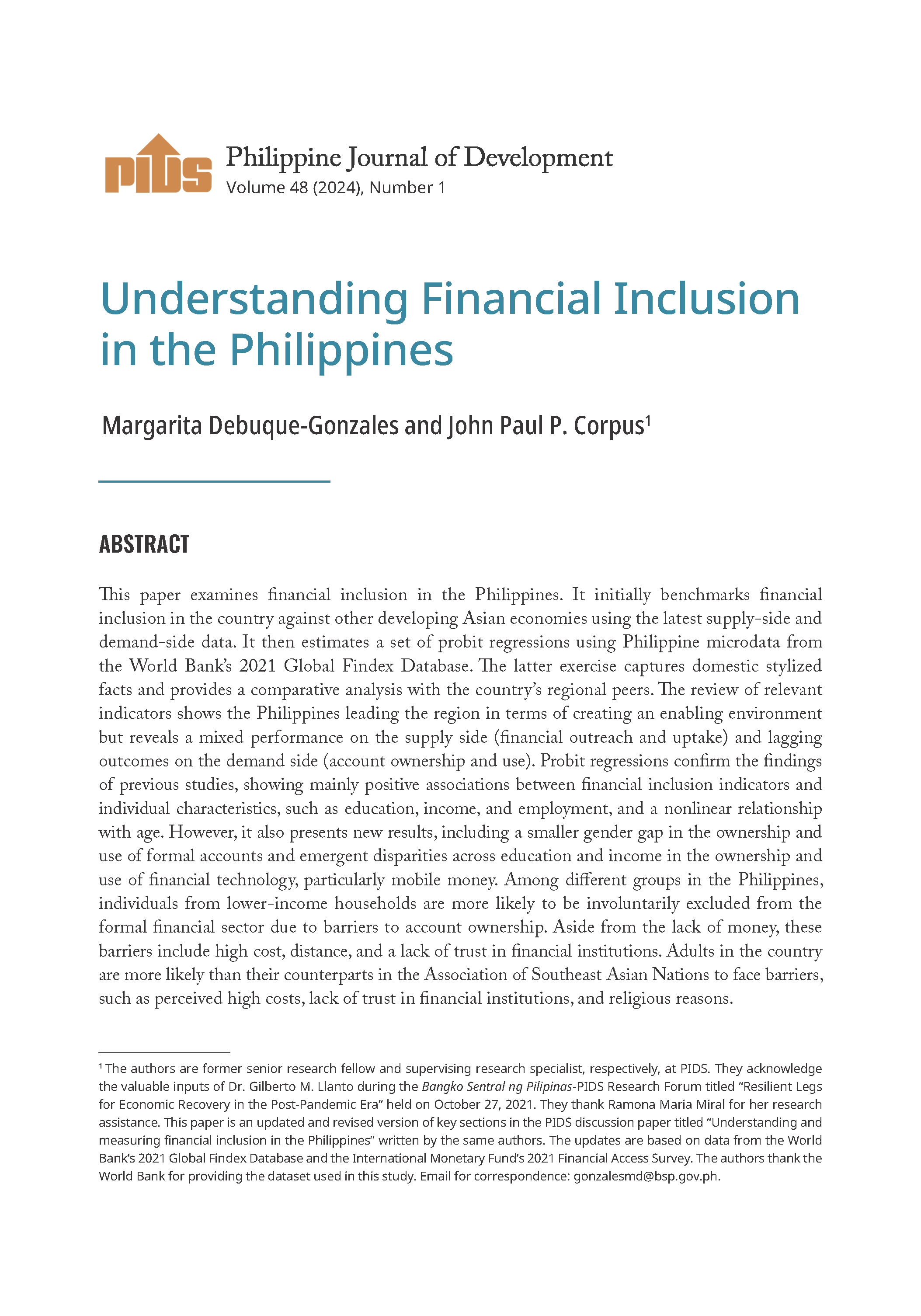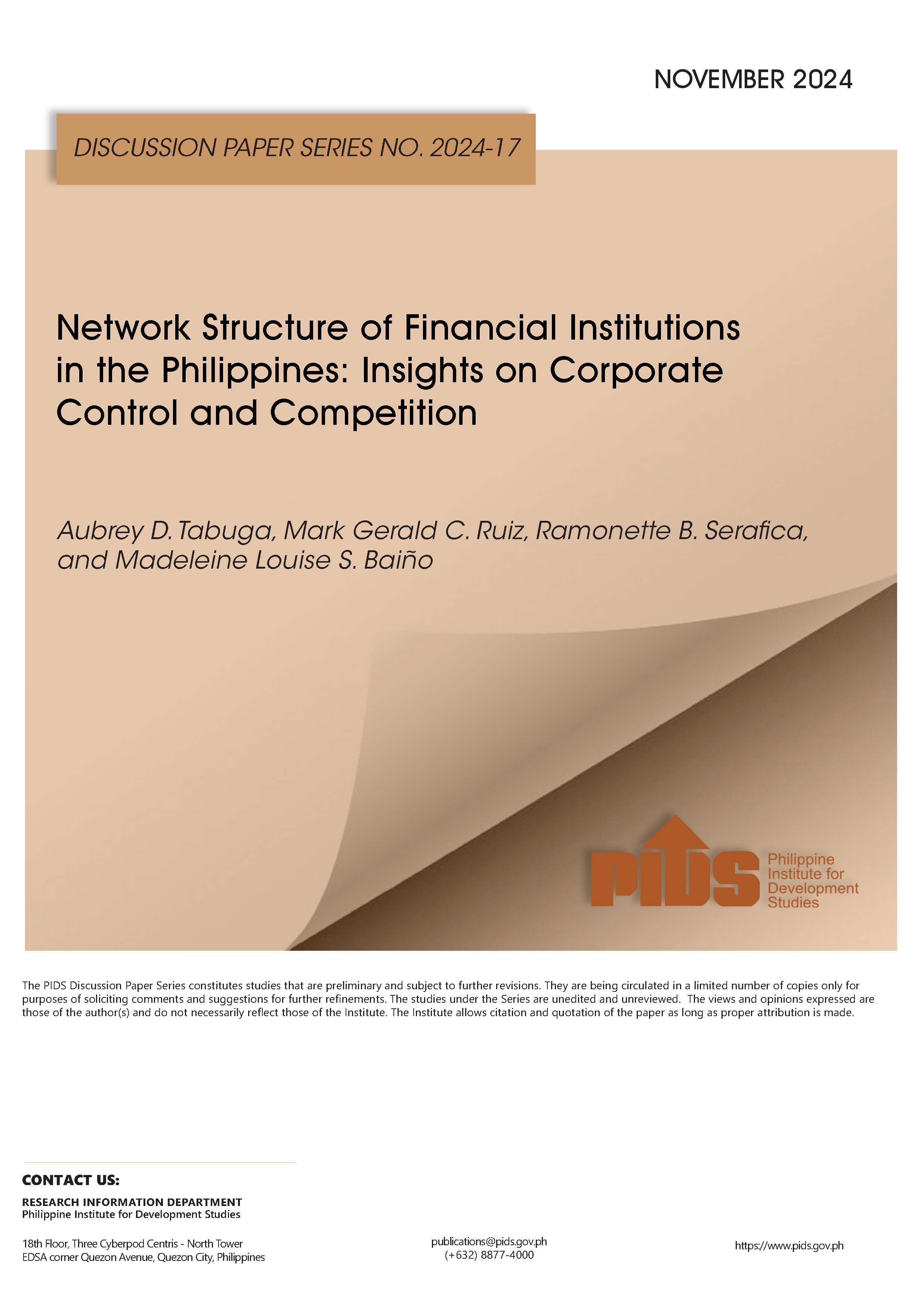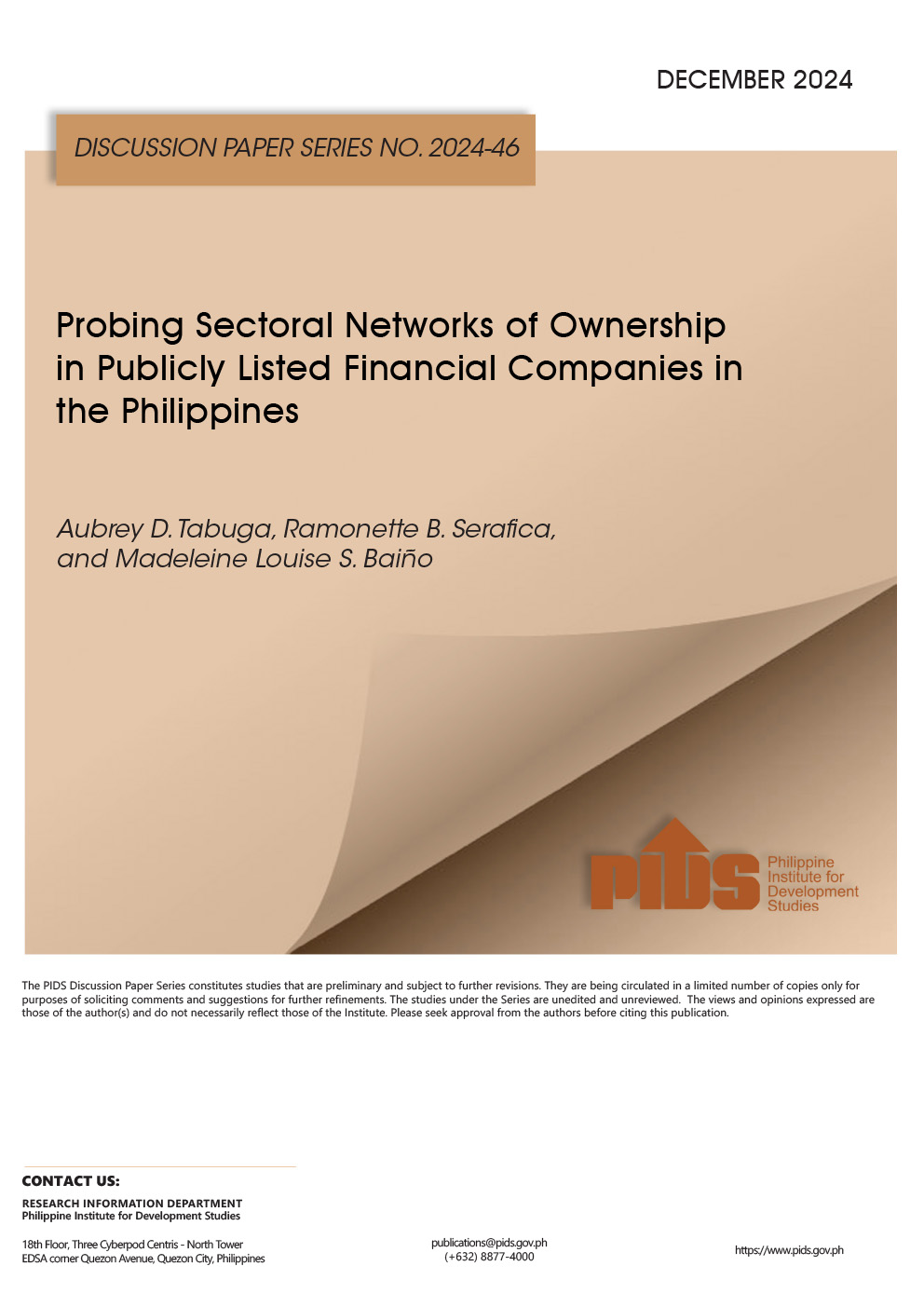HOLDING firms and non-bank financial institutions (NBFIs) have more influence in terms of investments in companies compared to banks, according to the government’s think tank.
In a discussion paper, Philippine Institute for Development Studies (PIDS) Research Fellows Aubrey D. Tabuga and Ramonette B. Serafica as well as research analyst Madeleine Louise S. Baiño found that while banks are crucial links in the financial system, they have less influence than holding firms and NBFIs.
The researchers, using network analysis, plotted the network of the financial systems and found that it was mainly made up of NBFIs and holding companies, followed by banking institutions and individuals/estates.
“Holding companies are in a position that enables them to reach many companies because they are of short distances to these actors. Their power and influence within the network emanating from their positions are fundamental because these are global measures of centrality,” the researchers said.
“Various holding companies are therefore highly central and influential owing to their ability to invest in many companies within the financial sector,” they added.
The PIDS study also found that in this network, government entities like the Government Service Insurance System (GSIS) and Social Security System (SSS); equities and holding companies; and services companies bridge separate business groups.
It also showed that while removing banks would disrupt the financial system “in a significant way,” it had a weak link to sectors such as manufacturing, mining, and construction.
“Another observation is that banks mainly relate to NBFIs around them as owners/investors [with arrows coming from banks going to NBFIs] rather than as recipients of investments. Banks receive investments from holding companies and individual investors,” the researchers said.
The data used in the study was limited to publicly-listed companies due to the availability of data from the Philippine Stock Exchange website as well as the official company websites of those included in the study.
The study covered 70 percent of the Top 20 Universal and Commercial Banks and 45 percent of Top 20 Thrift Banks based on the Bangko Sentral ng Pilipinas (BSP) data as of December 2023.
“The network is also considered as a sparsely connected network with the various centrality measures exhibiting a power-law distribution where most have very low centrality scores and only very few have very high scores,” the researchers said.
“This indicates a relatively unequal influence within the network as only very few entities can maximize their network positions. A more densely connected network would have a relatively normal distribution,” they added.
The network of financial institutions comprises mostly NBFIs at 37 percent and holding companies with nearly 16 percent in the network of publicly listed financial companies.
This included individuals/estates that formed 12 percent of the total followed by banks, 10 percent; Other services, 9 percent; property sector, 8 percent; industrial sector, 5 percent; and rural banks, 1 percent.











